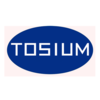定位于材料基因組計劃的鎳基高溫合金互擴(kuò)散系數(shù)矩陣的高通量測定定位于材料基因組計劃的鎳基高溫合金互擴(kuò)散系數(shù)矩陣的高通量測定MGI-oriented High-throughput Measurement of Interdiffusion Coefficient Matrices in Ni-based Superalloys 尋找新一代鎳基單晶高溫合金中Re的替代元素以實現(xiàn)少Re甚至無Re化是當(dāng)前高溫合金領(lǐng)域的研究熱點(diǎn)。從擴(kuò)散系數(shù)角度出發(fā)尋找具有與Re相當(dāng)或者更低擴(kuò)散系數(shù)的元素是有效的研究策略之一。在多元合金中,互擴(kuò)散系數(shù)矩陣可全面表征任一合金元素的擴(kuò)散能力。因此,精確測定不同合金元素在鎳基高溫合金γ和γ'相中隨成分和溫度變化的互擴(kuò)散系數(shù)矩陣是當(dāng)務(wù)之急。首先,概述當(dāng)前鎳基高溫合金互擴(kuò)散系數(shù)矩陣測定的現(xiàn)狀,以及用于多元合金互擴(kuò)散系數(shù)測定的傳統(tǒng)Matano-Kirkaldy方法和新型數(shù)值回歸方法。由于傳統(tǒng)Matano-Kirkaldy方法效率低,文獻(xiàn)中鮮有鎳基高溫合金三元及更高組元體系互擴(kuò)散系數(shù)矩陣的報道。本研究小組最近基于Fick第二定律和原子移動性概念發(fā)展起來的新型數(shù)值回歸方法,可用于任意組元合金精準(zhǔn)互擴(kuò)散系數(shù)矩陣的高通量測定。隨后以Ni-Al-Ta三元合金γ相為例詳細(xì)闡述新型數(shù)值回歸法用于合金互擴(kuò)散系數(shù)矩陣高通量測定以及測定結(jié)果的可靠性驗證過程。之后,簡述本研究小組關(guān)于鎳基高溫合金γ和γ'相互擴(kuò)散系數(shù)矩陣測定的最新進(jìn)展。目前已經(jīng)完成了核心三元合金體系Ni-Al-X(X=Rh,Ta,W,Re,Os和Ir)γ及γ'相互擴(kuò)散系數(shù)矩陣的高通量測定,并對結(jié)果可靠性進(jìn)行了細(xì)致的驗證。通過對比不同元素在鎳基高溫合金中的互擴(kuò)散系數(shù),初步提出新一代鎳基高溫合金中Re的可能替代元素及合金成分設(shè)計的關(guān)鍵。最后,指出鎳基高溫合金互擴(kuò)散系數(shù)矩陣測定的下一步工作和互擴(kuò)散系數(shù)矩陣高通量測定的發(fā)展方向。 One of the research hotspots in the field of high-temperature alloys was to search the substitutional elements for Re in order to prepare the single-crystal Ni-based superalloys with less or even no Re addition. To find the elements with similar or even lower diffusion coefficients in comparison with that of Re was one of the effective strategies. In multicomponent alloys, the interdiffusivity matrix were used to comprehensively characterize the diffusion ability of any alloying elements. Therefore, accurate determination of the composition-dependant and temperature-dependent interdiffusivities matrices of different elements in γ and γ' phases of Ni-based superalloys was high priority. The paper briefly introduces of the status of the interdiffusivity matrices determination in Ni-based superalloys, and the methods for determining the interdiffusivities in multicomponent alloys, including the traditional Matano-Kirkaldy method and recently proposed numerical inverse method. Because the traditional Matano-Kirkaldy method is of low efficiency, the experimental reports on interdiffusivity matrices in ternary and higher order sub-systems of the Ni-based superalloys were very scarce in the literature. While the numerical inverse method newly proposed in our research group based on Fick's second law can be utilized for high-throughput measurement of accurate interdiffusivity matrices in alloys with any number of components. After that, the successful application of the numerical inverse method in the high-throughput measurement of interdiffusivity matrices in alloys is demonstrated in fcc (γ) phase of the ternary Ni-Al-Ta system. Moreover, the validation of the resulting composition-dependant and temperature-dependent interdiffusivity matrices is also comprehensively made. Then, this paper summarizes the recent progress in the measurement of interdiffusivity matrices in γ and γ' phases of a series of core ternary Ni-based superalloys achieved in our research group. Up to now, the interdiffusivity matrices in γ and γ' phases of the core ternary systems including Ni-Al-X (X=Rh, Ta, W, Re, Os and Ir) have been efficiently measured, and their reliability has also been carefully validated. Based on the experimental results, the interdiffusivities for different elements in Ni-based superalloys are carefully compared, from which the potential substitutional alloying elements for Re in Ni-based supperalloys as well as the points for alloy composition design are proposed. Finally, the research work of next step on the measurement of interdiffusivity matrices in Ni-based superalloys as well as the development trends of high-throughput measurement of interdiffusivities in our research group are pointed out.
|







